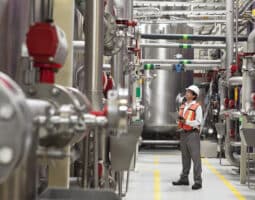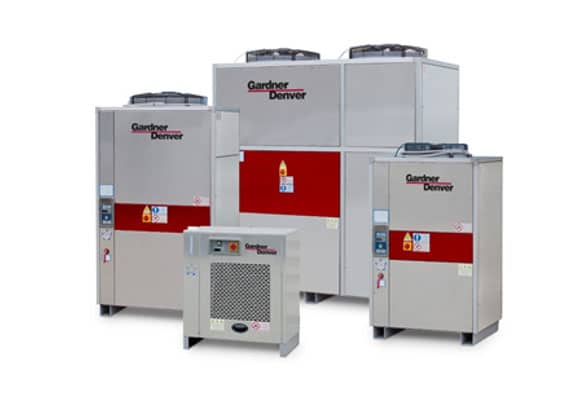In industrial operations, compressed air systems are indispensable, powering tools, processes, and machinery across various industries. However, these systems come with a challenge that many overlook: condensate management. Condensate, a byproduct of the compression process, can impact system performance, damage equipment, and even pose environmental risks if not properly managed.
What is Condensate in Compressed Air Systems?
Condensate is the liquid that forms when moisture-laden air undergoes compression and cooling. During compression, the air’s temperature increases, reducing its ability to hold water vapor. As the air cools, this excess water vapor condenses into liquid, creating what we call condensate.
Composition of Condensate:
- Water: Water is the primary component of condensate, originating from moisture in the ambient air drawn into the compressor. The amount of water varies based on environmental conditions like humidity and temperature. Excess water can cause rust, corrosion, and freezing, which negatively impact system performance.
- Oil: Oil in condensate is typically found in systems using oil-lubricated compressors, where it comes from lubricants used during the compression process. Even trace amounts of oil require careful handling to meet environmental regulations. If unmanaged, oil can form residues that clog lines, damage filters, and contaminate downstream equipment.
- Particulates: Dust, dirt, and other particles from ambient air or internal system wear can accumulate in condensate. These particulates contribute to sludge buildup in pipes and drains, potentially damaging system components and reducing the efficiency of air dryers and filters.
- Rust and Corrosion Particles: Rust and corrosion particles form when moisture reacts with metal components within the system. These particles can lead to pipe blockages and reduced system efficiency, often signaling poor condensate management or aging equipment.
- Contaminants: Bacteria, mold, and other microorganisms thrive in the moist environment of condensate. This is particularly problematic in industries that require sterile conditions, such as food and pharmaceutical production.
The amount of condensate produced depends on several factors:
- Humidity Levels: Higher humidity results in more water vapor in the air, which leads to increased condensate during compression.
- Compressor Type: Oil-lubricated compressors produce more complex condensate containing oil residues, while oil-free compressors generate primarily water-based condensate.
- Operating Conditions: Temperature, pressure, and system design all influence how much condensate is formed.
By understanding the composition of condensate, you can see why proper management is crucial to protect your equipment, ensure system efficiency, and remain compliant with environmental standards.
Fundamentals of Managing Condensate
Effective condensate management is essential to maintaining system efficiency, preventing equipment damage, and complying with environmental regulations. Here’s how you can address the challenges posed by condensate:
Removal Systems
Removing condensate from your compressed air system requires strategic tools and techniques:
- Moisture Traps and Drain Valves:
- Installed at key points like aftercoolers, air receivers, and low points in piping systems to collect and remove condensate.
- Automatic Drains: Operate without manual intervention, ensuring consistent removal of condensate even in hard-to-reach areas.
- Manual Drains: Require periodic checks and draining, which can be labor-intensive but cost-effective for smaller systems.
- Air Treatment:
- Air Dryers: Reduce moisture in compressed air to minimize condensate formation. Options include:
- Refrigerated Dryers: Cool the air to condense water vapor, then remove the moisture.
- Desiccant Dryers: Absorb water vapor using desiccant material, suitable for applications requiring extremely dry air.
- Coalescing Filters: Remove oil and particulates from the air stream, ensuring cleaner air and easier condensate management.
- Seasonal Adjustments:
- During colder months, condensate can freeze in pipes, causing blockages and damage.
- Insulating pipes and increasing the frequency of condensate removal can prevent freezing-related issues.
- Air Dryers: Reduce moisture in compressed air to minimize condensate formation. Options include:
Proactive Maintenance
Regular maintenance is key to keeping your system running smoothly and preventing costly breakdowns:
- Inspect and Maintain Drains and Traps: Check for clogs or malfunctions that could lead to moisture buildup.
- Monitor Air Dryer Performance: Ensure your dryers are functioning effectively, especially in high-humidity environments.
- Adapt for Seasonal Conditions: Prepare your system for winter by insulating pipes and using freeze-resistant drain systems.
By taking a proactive approach, you can extend the life of your equipment, reduce downtime, and ensure consistent performance year-round.
The Environmental Impact of Condensate
Properly managing condensate isn’t just about system performance—it’s also an environmental responsibility.
Oil-Contaminated Condensate
Condensate from oil-lubricated compressors often contains traces of oil, making it hazardous if not handled correctly:
- Environmental Risks: Directly discharging oil-contaminated condensate can pollute soil and water, harming ecosystems.
- Regulatory Compliance: Most countries enforce strict guidelines for the disposal of oil-laden condensate. Failing to comply can result in hefty fines and reputational damage.
Treatment Solutions
Oil-water separation is critical to managing condensate responsibly:
- Oil-Water Separators:
- Separate oil from water, allowing for environmentally safe discharge of the water.
- Help meet regulatory requirements and reduce environmental impact.
- Advanced Filtration Systems:
- Provide additional purification, ensuring the discharged water meets the highest safety standards.
Microbial and Particulate Concerns
Beyond oil, condensate may contain microbial contaminants and particulates that require treatment:
- Filters and Dryers: Help capture and neutralize these contaminants before condensate discharge.
- Regular Monitoring: Ensures compliance with environmental regulations and maintains air quality in sensitive industries.
By investing in effective condensate treatment systems, you not only protect the environment but also demonstrate your commitment to sustainable business practices.
Choose Cullum & Brown for Condensate Management
Cullum & Brown offers industry-leading solutions for condensate management, ensuring your compressed air system operates efficiently and responsibly.
Comprehensive Solutions
From automatic drain systems to advanced oil-water separators, Cullum & Brown provides a full suite of products to handle condensate challenges effectively. Our partnership with top brands like Gardner Denver ensures access to cutting-edge technology.
Expertise and Support
With decades of experience, Cullum & Brown’s team has the knowledge to tackle even the most complex condensate management issues. We offer tailored solutions to meet the unique needs of your facility, ensuring compliance and optimal performance.
Preventative Maintenance Services
Our preventative maintenance programs are designed to keep your system running smoothly year-round, minimizing downtime and repair costs while enhancing equipment longevity.
Custom Solutions
Every operation is different, which is why we develop customized strategies for condensate management. Whether you’re dealing with high humidity, extreme cold, or specialized industry requirements, Cullum & Brown has you covered.

